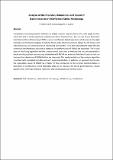Files in this item
Analysis of the precision, robustness and speed of elastic resonator interference stress microscopy
Item metadata
| dc.contributor.author | Liehm, Philipp | |
| dc.contributor.author | Kronenberg, Nils Michael | |
| dc.contributor.author | Gather, Malte Christian | |
| dc.date.accessioned | 2019-05-07T23:37:34Z | |
| dc.date.available | 2019-05-07T23:37:34Z | |
| dc.date.issued | 2018-05-08 | |
| dc.identifier | 252626689 | |
| dc.identifier | 9a978c3e-a60c-4822-a976-a4e82a981ad3 | |
| dc.identifier | 85058405671 | |
| dc.identifier | 000432697900018 | |
| dc.identifier.citation | Liehm , P , Kronenberg , N M & Gather , M C 2018 , ' Analysis of the precision, robustness and speed of elastic resonator interference stress microscopy ' , Biophysical Journal , vol. 114 , no. 9 , pp. 2180-2193 . https://doi.org/10.1016/j.bpj.2018.03.034 | en |
| dc.identifier.issn | 0006-3495 | |
| dc.identifier.other | ORCID: /0000-0002-4857-5562/work/47136470 | |
| dc.identifier.uri | https://hdl.handle.net/10023/17661 | |
| dc.description | This project has received funding from the Human Frontiers Science Program (RGY0074/2013), the Scottish Funding Council (via SUPA), the EPSRC DTP (EP/L505079/1), a BBSRC research grant (BB/P027148/1), an EPSRC programme grant (EP/P030017/1) and the RS MacDonald Charitable Trust. | en |
| dc.description.abstract | Localization-microscopy-based methods are widely used to map the forces that cells apply to their substrates and to study important questions of cellular biomechanics. By contrast, elastic resonator interference stress microscopy (ERISM) uses an interference-based approach, which requires low light intensity and facilitates imaging of cellular forces with extreme precision (down to pN forces) and robustness (e.g., for continuous force monitoring over weeks). Here, the measurement trade-offs and numerical considerations required to optimize the performance of ERISM are described. The crucial parts of the fitting algorithm and the computational tools used to evaluate the data are explained in detail, and the precision and accuracy achievable with ERISM are analyzed. Additional features that can improve the robustness of ERISM further are discussed. The implementation of the analysis algorithm is verified with simulated test data and with experimental data. In addition, an approach to increase the acquisition speed of ERISM by a factor of four compared to the original implementation is described. In combination, these strategies allow us to measure the forces generated by a neural growth cone with high temporal resolution and continuously over several hours. | |
| dc.format.extent | 14 | |
| dc.format.extent | 1571147 | |
| dc.language.iso | eng | |
| dc.relation.ispartof | Biophysical Journal | en |
| dc.subject | Cell mechanics | en |
| dc.subject | Traction force microscopy | en |
| dc.subject | Cellular forces | en |
| dc.subject | Interference | en |
| dc.subject | QC Physics | en |
| dc.subject | QH301 Biology | en |
| dc.subject | DAS | en |
| dc.subject.lcc | QC | en |
| dc.subject.lcc | QH301 | en |
| dc.title | Analysis of the precision, robustness and speed of elastic resonator interference stress microscopy | en |
| dc.type | Journal article | en |
| dc.contributor.sponsor | Human Frontiers Science Programme | en |
| dc.contributor.sponsor | BBSRC | en |
| dc.contributor.sponsor | EPSRC | en |
| dc.contributor.institution | University of St Andrews. School of Physics and Astronomy | en |
| dc.contributor.institution | University of St Andrews. Biomedical Sciences Research Complex | en |
| dc.identifier.doi | 10.1016/j.bpj.2018.03.034 | |
| dc.description.status | Peer reviewed | en |
| dc.date.embargoedUntil | 2019-05-08 | |
| dc.identifier.grantnumber | RGY0074/2013 | en |
| dc.identifier.grantnumber | BB/P027148/1 | en |
| dc.identifier.grantnumber | EP/P030017/1 | en |
This item appears in the following Collection(s)
Items in the St Andrews Research Repository are protected by copyright, with all rights reserved, unless otherwise indicated.

